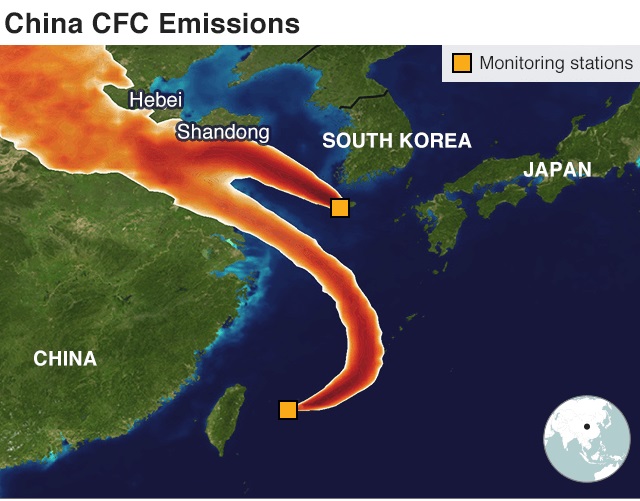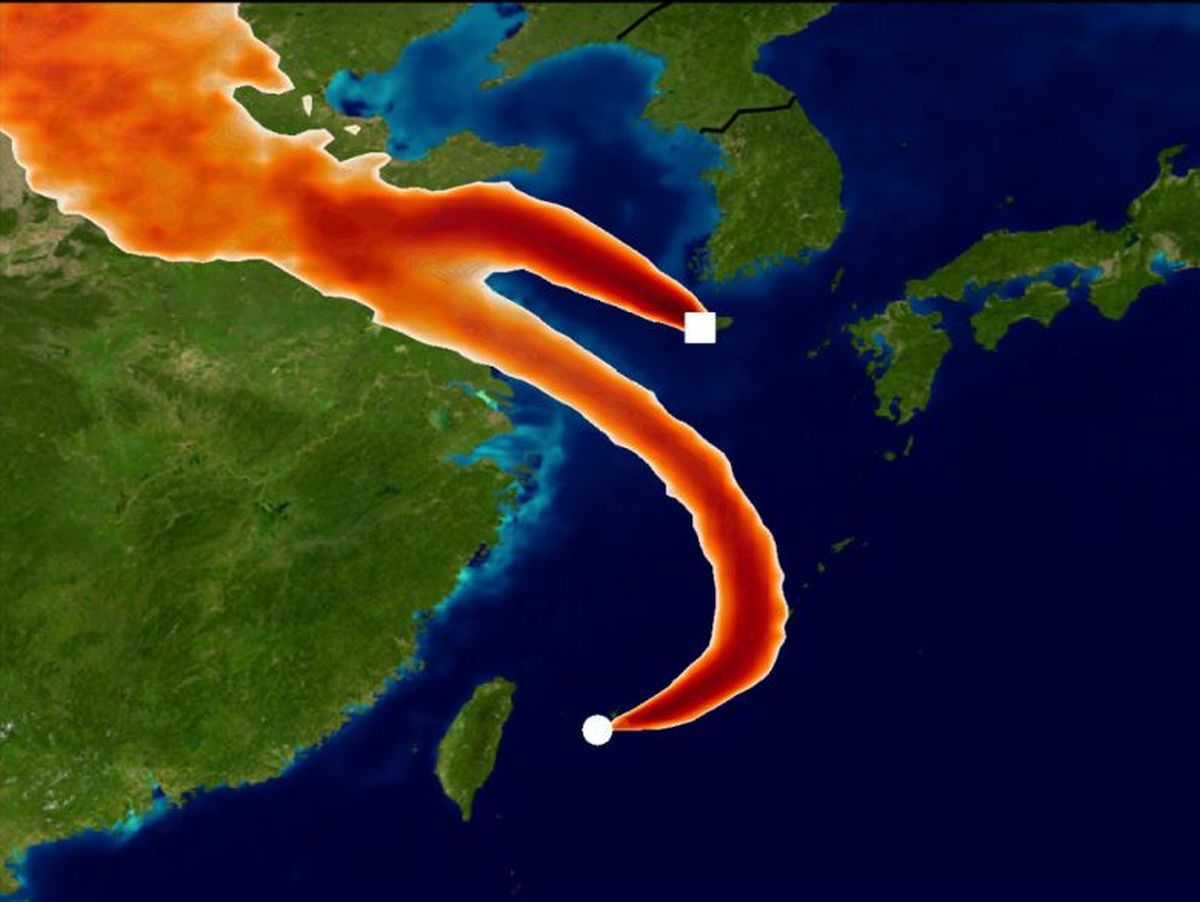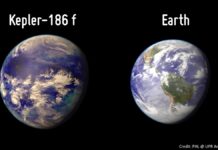Global emissions of Trichlorofluoromethane (CFC-11), an illegal greenhouse gas internationally banned under the Montreal Protocol [signed by 197 countries including Canada, USA, and China in 1987] because it destroys the Earth’s protective ozone layer, have been rising since 2013.
The landmark treaty, designed to halt and reduce the production of chlorofluorocarbons (CFC), led to a significant reduction in CFC-11, which then allowed the damaged ozone layer to heal. But the increase implied someone was violating the global ban and secretly using the banned chemical, about 5,000 times more potent than carbon dioxide at warming the climate.
But the scientists could not locate the real polluter even though the nation could be traced to somewhere in east Asia. Now, according to a new study published in Nature on May 22, between 40 and 60% of total global CFC-11 emissions come from China, primarily from the Chinese north-eastern provinces of Shandong and Hebei.
“Several considerations suggest that the increase in CFC-11 emissions from eastern mainland China is likely to be the result of new production and use, which is inconsistent with the Montreal Protocol agreement to phase out global chlorofluorocarbon production by 2010,” the scientists wrote in the abstract of the study.
The Chinese continue to make and use the dangerous chemical because it’s a cheaper material to produce foam insulation for refrigerators and buildings, claim scientists from the University of Bristol, Kyungpook National University, and the Massachusetts Institute of Technology.

Matthew Rigby, lead author of the study and Reader in Atmospheric Chemistry in the School of Chemistry at the University of Bristol, remarked:
“It wasn’t entirely a surprise. Scientists and watchdogs didn’t know just how much manufacturers in China were emitting — about 7,000 tonnes of CFC-11 since 2013 in that area alone. That’s more than double the emissions we were expecting from China at the time. Was this enough to account for a substantial fraction of the global emissions rise that we saw? What we’ve found in this study is that, yes, it is globally significant.”
The team usead an international network of measurement devices designed to identify and track gases in the atmosphere, and analysed weather and wind patterns to determine the origin of the gas increase. The data gave the scientists a trail to follow which ultimately led them to China.
“This new study is based on spikes in the data on air that comes from China,” Rigby, told BBC Inside Science. “If we look at these extra emissions that we’ve identified from eastern China, it equates to about 35 million tonnes of CO2 being emitted into the atmosphere every year, that’s equivalent to about 10% of UK emissions, or similar to the whole of London.”
In a statement, Joyce Msuya, acting executive director of the United Nations Environment Program, which administers the Montreal Protocol, said that action on CFC-11 “is being taken by all parties at the international level and by China domestically”.
But many local witnesses say that the Chinese government has been turning a blind eye or taking large payoffs from the “rogue companies” it claims to shut down. Environmental inspectors in northern China have found that nearly 14,000 companies or 70% of the businesses they examined failed to meet environmental standards for controlling air pollution.
A massive hole in the ozone layer over Antarctica was discovered in the mid-1980s. The scientists believed the hole in the Northern Hemisphere could be fully fixed by the 2030s and Antarctica by the 2060s as the decline in chlorofluorocarbon emissions under the Montreal Protocol were expected to lead to a full recovery of the ozone layer. However, if the increased emissions from eastern China aren’t stopped soon, it could delay the healing of the ozone layer by a decade, warns Rigby.






